DEFINITION OF TERMS:
- KEYSTONE means they are listed by National Wildlife Federation as core plants for a wildlife garden in my ecoregion (Ecoregion 8).
- NOT QUITE NATIVE means they are slightly out of range but adjacent to NYS as determined by GoBotany and NY Flora Atlas.
- Otherwise the plant is a NY-native or native to the area noted.
Northern maidenhair fern (Adiantum pedatum)
Northern maidenhair is my absolute favorite. It has a beautiful circular bend to the frond that’s just gorgeous. I had seen it frequently when we were hiking in the Adirondacks and other parks, but I always thought that such a beautiful plant would be too hard to grow at home. I’ve been amazed at how well it has done even though I didn’t give it any special attention.
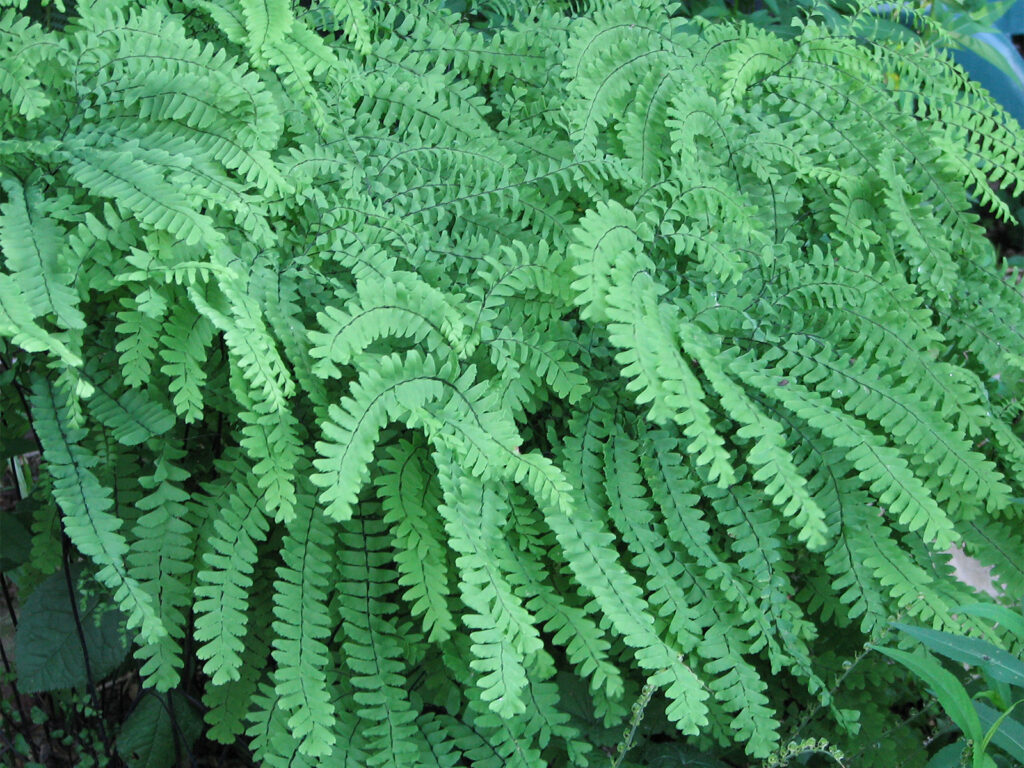
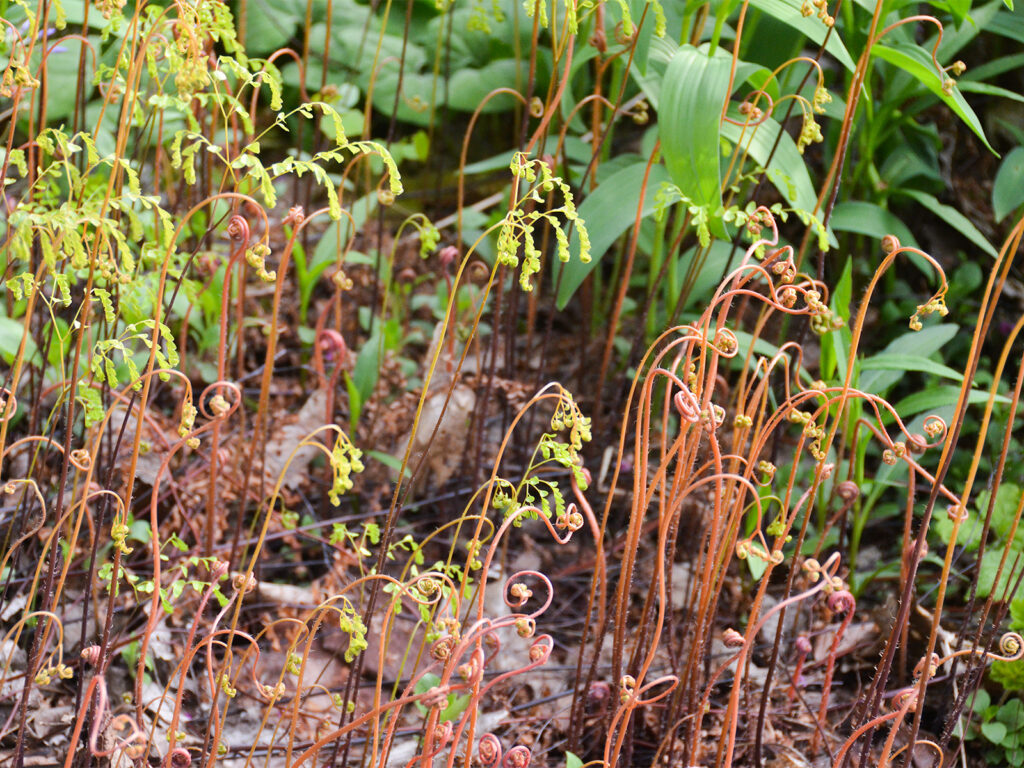
This is what it looks like in the spring as it starts to emerge.
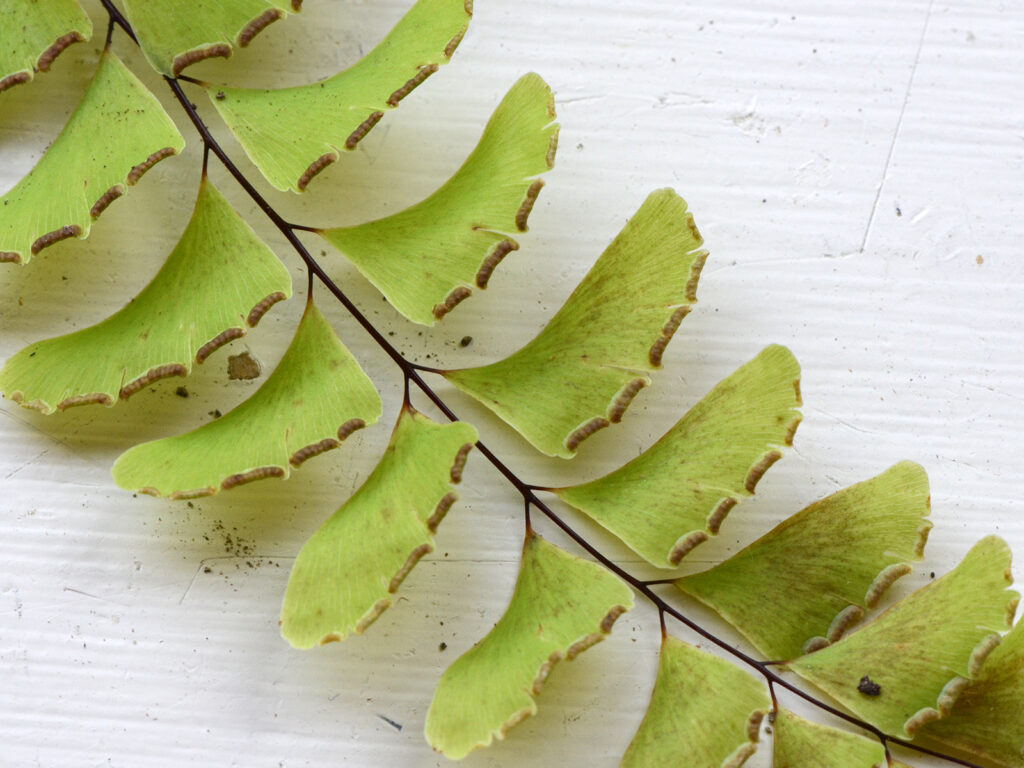
The spores are curled on the back of the pinna.
Wildlife: Cover for toads, lizards
- Learn more:
- Wildflower Center: Northern maidenhair
Ebony spleenwort (Asplenium platyneuron)

I like the interesting architecture of the fronds and leaves. My first attempt at growing this failed, probably because of competition from surrounding plants. I tried a second plant.
Although it’s supposed to be one of the easiest of the spleenworts to grow, I haven’t had success. Both have died. When I get a chance I’ll get one more to try.
- Learn more:
- Wildflower Center: Ebony spleenwort
Lady fern (Athyrium filix-femina)
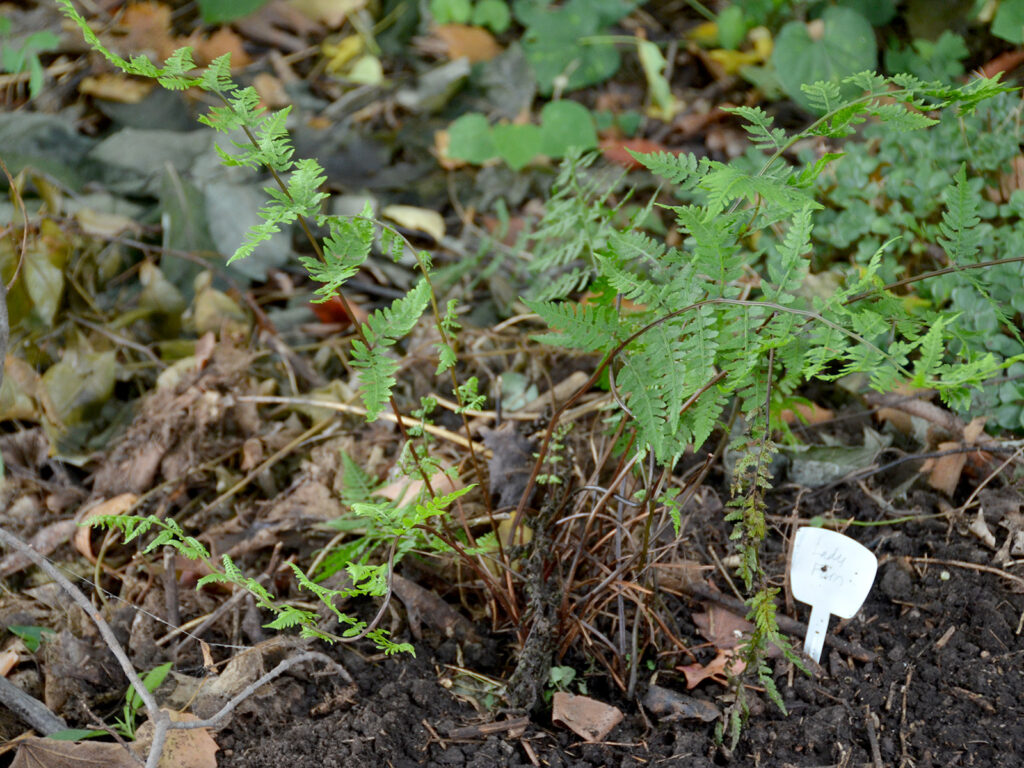
I bought this in the 2015 HGCNY plant sale and planted it under the coffee tree.
- Learn more:
- Wildflower Center: Lady fern
Spinulose wood fern (Dryopteris carthusiana)
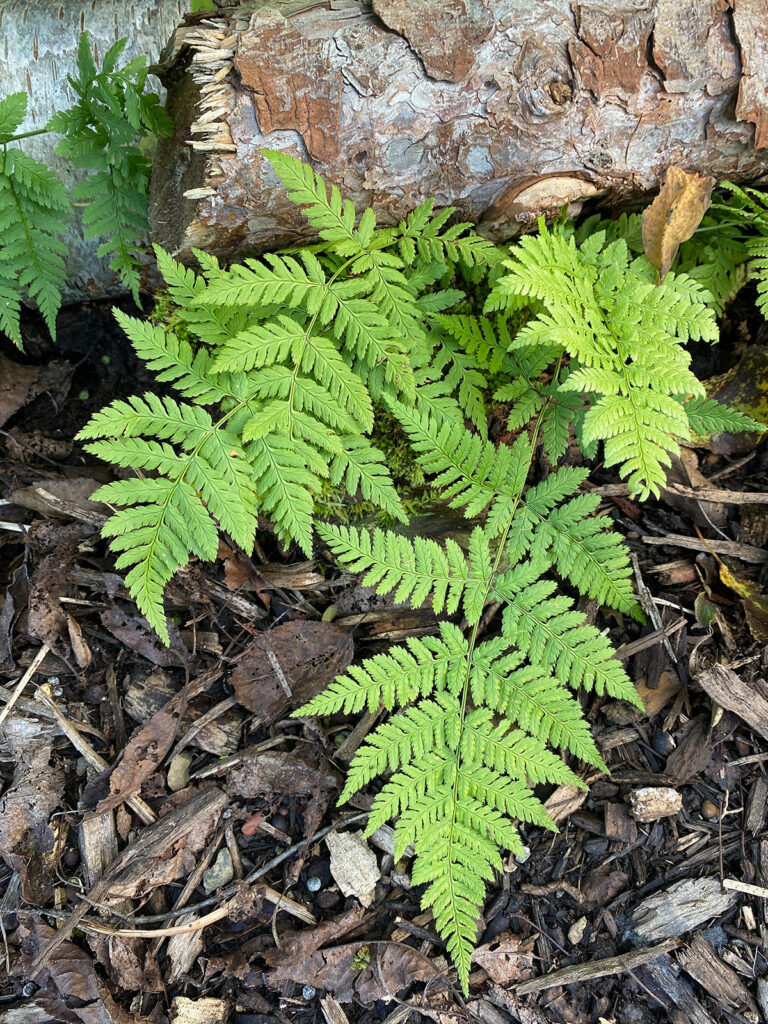
This apparently come in along with a log I picked up at the curb to line my paths. It’s currently in front of the bayberry bushes, sticking out onto the path, so I might move it somewhere where it can thrive. It’s a nice little fern.
- Learn more:
- Wildflower Center: Spinulose wood fern
Goldie’s wood fern (Dryopteris goldiana)
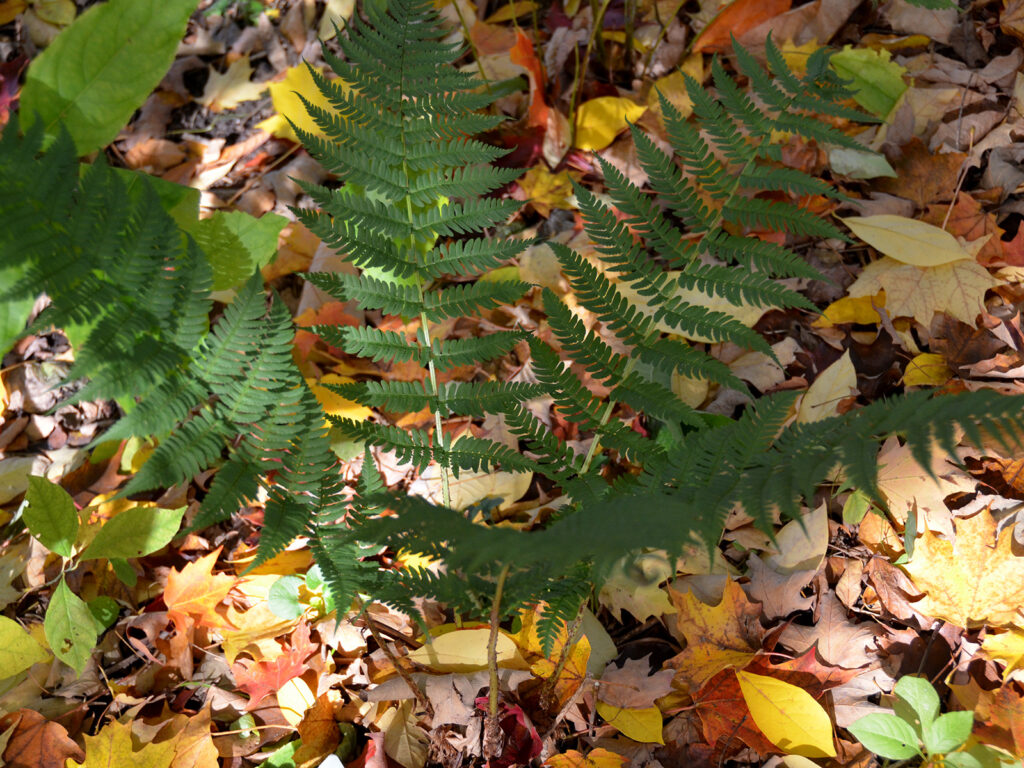
I planted this in November 2013, and it seems to have solidly taken hold.
Fortunately, it likes alkaline soil, which we have. I’m looking forward to it getting taller.
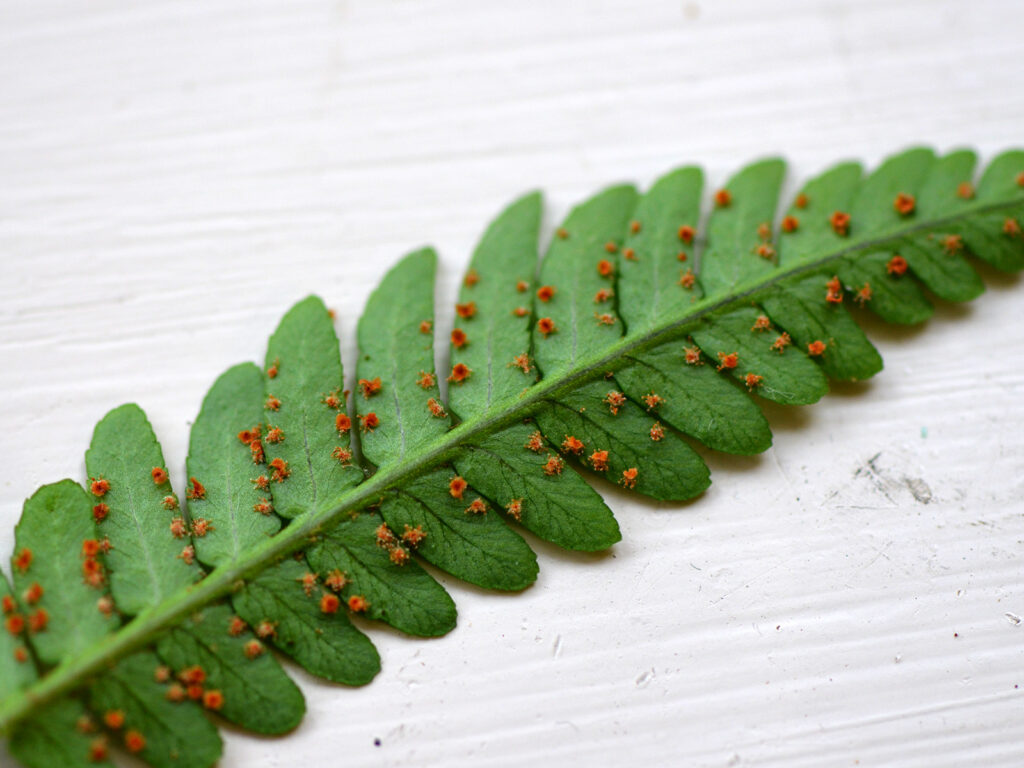
I was surprised to see the relatively small sori on what will be a fairly large fern.
Deer resistance: Resistant
- Learn more:
- Wildflower Center: Goldie’s wood fern
Marginal wood fern (Dryopteris marginalis)
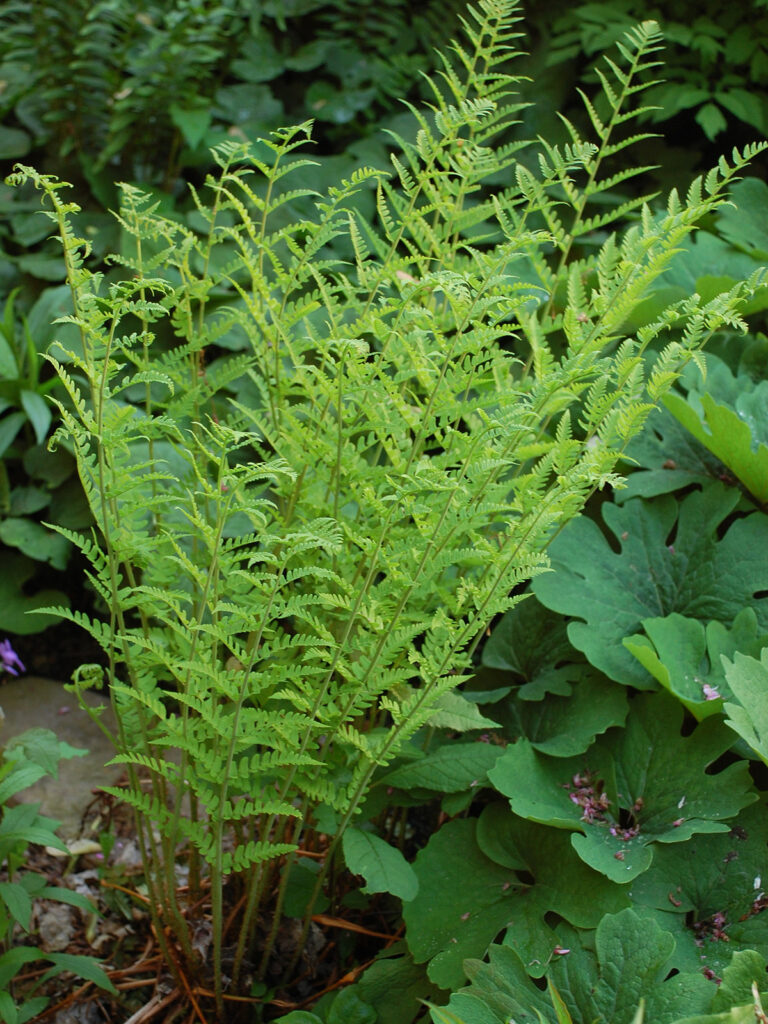
This fern has grown well for us and has stayed in one place (though I wouldn’t mind it spreading.)
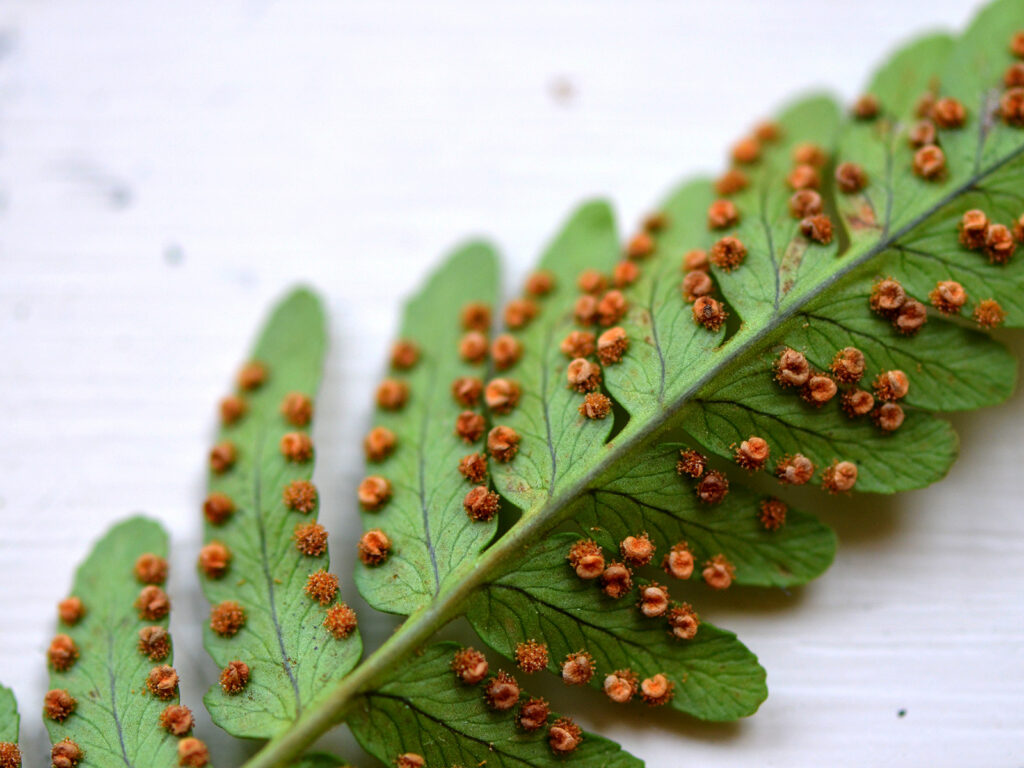
The sori are at the margins of the pinnules (i.e. the little bumps on the underside of the leaflets), hence the name.
Wildlife: Cover for toads, lizards
- Learn more:
- Wildflower Center: Marginal wood fern
Ostrich fern (Matteuccia struthiopteris var. pensylvanica)
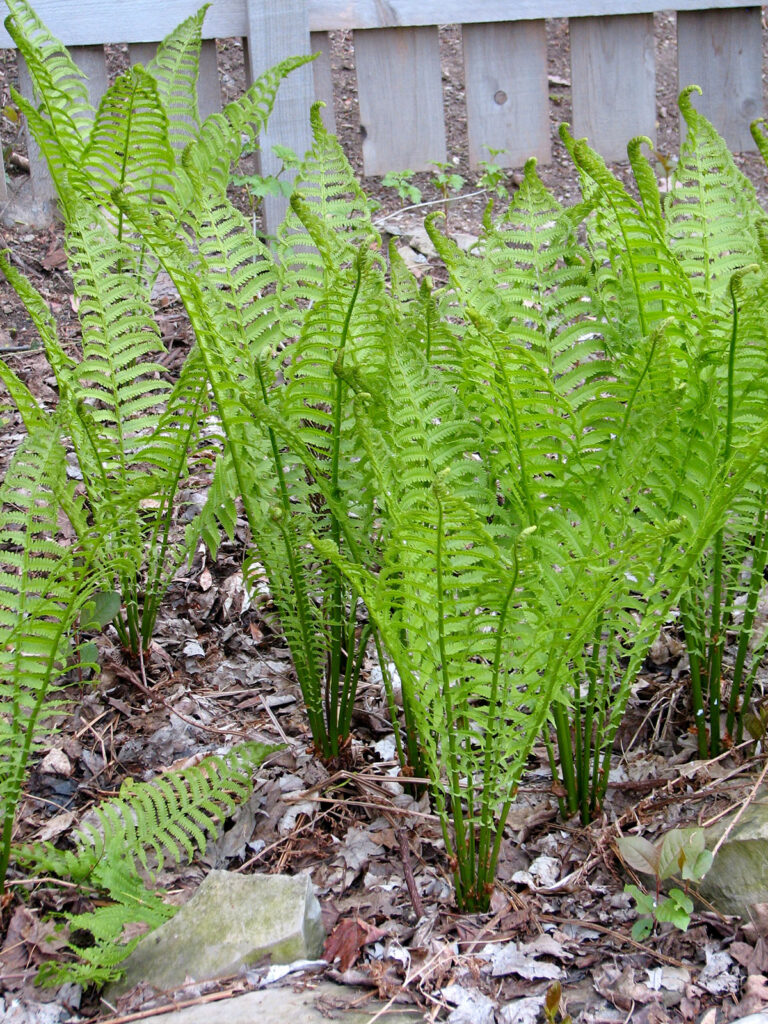
These have been patiently spreading on the edge of my backyard woodland garden. In fact, I’ve had to define an area for them, but they seem to stay within the boundary with little trouble.
It’s so nice to know that these just come up each year, and that l can simply leave the leaves that have fallen from the trees overhead, and they’ll emerge just fine in the spring — just like in the woods! They do seem to be negatively affected by drought, though.
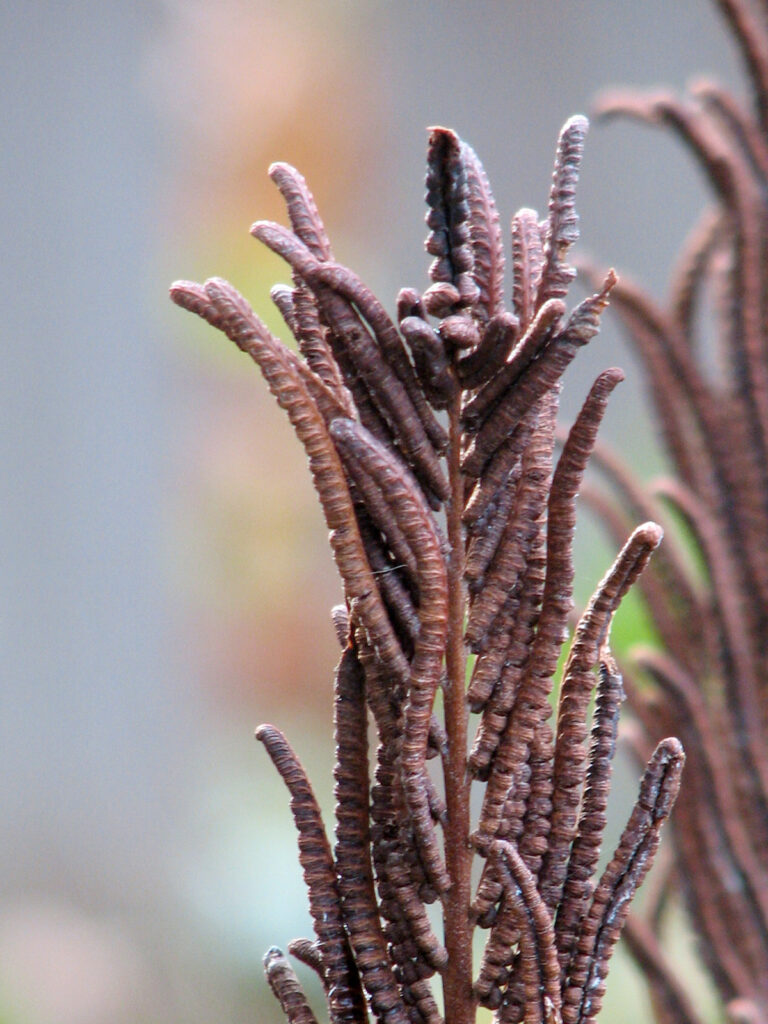
This is the mature fertile frond as it looks in the fall. In the spring, it will open to release the spores.
- Learn more:
- Wildflower Center: Ostrich fern
